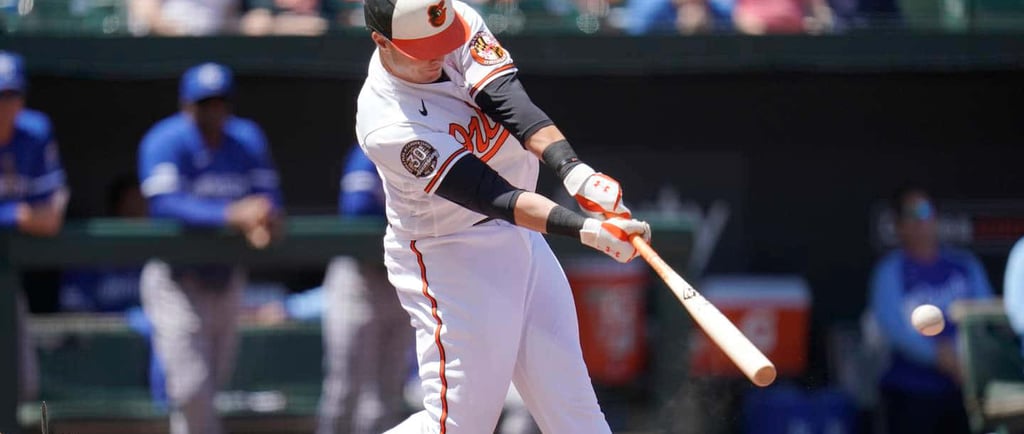Understanding Rotational Power in the Baseball Swing
Learn how rotational power drives the modern baseball swing. Discover why hip rotation, sequencing, and core strength matter more than size or strength alone.


Every coach talks about it. Every hitter wants more of it. And every highlight reel features it.
Rotational power is one of the most important ingredients in an elite baseball swing — and yet, most young players (and even many coaches) don’t fully understand what it is or how to train it.
At Swing Lab, we study movement. We use video analysis, force plates, and high-speed sensors to break down exactly how great hitters create force — and it almost always comes back to one thing: how efficiently they rotate.
In this article, we’ll explain what rotational power really is, how it shows up in the swing, and what you can do to help your athlete develop it.
What Is Rotational Power?
Rotational power is the ability to generate force by rotating the body — specifically, the hips, torso, and shoulders — around a stable axis. In hitting, it’s what allows a player to whip the barrel through the zone with speed, control, and explosiveness.
More simply: it’s how you hit the ball hard without being a bodybuilder.
Rotational power isn’t about size. It’s about timing, sequencing, and how well different parts of the body work together.
Where Does Power in the Swing Come From?
It’s a common misconception that power comes from the arms or shoulders. In reality, power in the swing is produced through a chain reaction that starts from the ground up:
The hitter loads and creates ground force with the back leg
The hips initiate the swing with a powerful rotation
The torso and core transfer that energy up the chain
The hands and bat lag behind, then snap through the zone with speed
This process is called kinematic sequencing. The most powerful hitters — from youth to the pros — have elite sequencing that lets them create more speed with less effort.
Why Rotational Power Matters
Rotational power is the engine behind most of the things coaches care about:
Exit Velocity
More efficient rotation = more bat speed = harder contact
Swing Consistency
A rotationally strong athlete can repeat movements under pressure
Injury Prevention
Proper sequencing reduces the strain on the arms and back
Adjustability
With better posture and core control, hitters can make mid-swing adjustments and handle a wider range of pitches
How to Know If a Player Is Rotationally Underpowered
Here are common signs that a hitter isn’t rotating efficiently:
Weak contact even with good timing
Upper-body dominant swing (mostly arms and hands)
Spinning off or losing balance on contact
Inconsistent barrel path or late bat speed
Difficulty hitting for power despite size or strength
Video analysis usually reveals issues like early rotation, no separation, or collapsing posture — all signs that the body isn’t sequencing correctly.
How to Train for Rotational Power
Rotational power doesn’t come from just swinging more. It comes from building a better engine.
At Swing Lab, we train rotational athletes with a mix of mechanical work and physical development. Here’s what that looks like:
1. Hip Rotation and Disassociation
Players need to separate their hips from their upper body — a key part of creating torque.
Exercises:
Hip mobility drills (90/90 transitions, lunge openers)
Med ball rotational throws
Banded separation drills
2. Core Stability and Strength
A strong core is essential for transferring force from the ground into the bat.
Exercises:
Anti-rotation drills (palloff presses, planks with reach)
Dead bugs and bird dogs
Cable or banded rotations
3. Posture and Spine Control
Power depends on staying in your posture during rotation.
Exercises:
Wall drills for spine angle
Split stance rotational swings
Single-leg balance work
4. Bat Speed and Intent-Based Swing Work
Once movement is clean, we train intent — teaching hitters to rotate aggressively and move fast without losing control.
Tools:
Overload/underload bats
Bat sensors for real-time feedback
Live hitting with power-focused rounds
What About Strength Training?
Strength helps — but only if it supports movement. Simply getting stronger doesn’t guarantee more bat speed. For rotational athletes, it’s better to focus on:
Unilateral strength (lunges, single-leg work)
Explosive hip and core power
Controlled mobility (especially in the thoracic spine and hips)
A well-designed strength program should improve how a hitter moves, not just how much weight they can lift.
Final Thoughts
Rotational power is a non-negotiable for modern hitters.
You don’t need to be big to hit the ball hard — you need to move efficiently. Hip rotation, core sequencing, posture, and intent all contribute to a powerful, repeatable swing that holds up under pressure.
At Swing Lab, we train hitters to move like athletes — not just swing like robots. Our programs blend swing mechanics, rotational strength, and real-time feedback to help players unlock power they didn’t even know they had.
If your athlete is struggling to hit the ball hard, despite good mechanics or size, rotational efficiency might be the missing piece. Book a movement screen with our team, and we’ll help you diagnose it.
from: AP photos
Excuses don't get walk-offs
get in the lab
info@lexasport.com
+1 (972) 638-0872
© 2025. All rights reserved.
NTX Swing Lab is a division of LEXA Sport
